by Blanca Valencia - @blacnsvalencia
.png.transform/rendition-xs/image_image%20(1).png)
From alioli to brava: the variety of recipes echoes the different cultures and traditions in the country

by Blanca Valencia - @blacnsvalencia
The sauces of Spain are both ancestral and rustic, many evolved from the almirez or mortero, the millenary pestle and mortar made out of wood, ceramic or marble that was the workhorse of every traditional kitchen. In our country, simplicity is prized and the runny egg yolk of a huevo frito or the sucked head of a prawn are magically converted into sauces in our palate’s gastronomic lexicon. Just look at the case of tortillas; the ubiquity of runny ones showcase a preference for the self-saucing recipes.
Many of our sauces like romesco, a sauce of almonds, tomatoes and ñora peppers are based on nuts, especially the prized almond but also upon peppers and herbs like parsley and of course on the pantry items we reach for the most, olive oil and vinegar.
In a regionalized country like Spain, codifying sauces can be challenging, but the lack of “gastronationalist” discourse means no questions arise when we see traditional soups like salmorejo and ajoblanco converted into them or when callos a la Madrileña or Madrid-style tripe are served alongside sriracha in La Tasquería, a one star Michelin starred restaurant in Madrid.
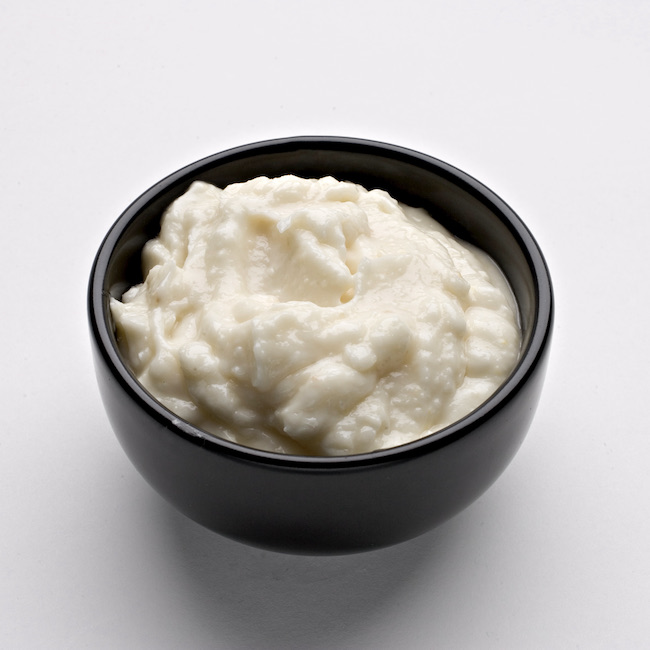
Flashy and voluptuous are not for the modern Spaniard. Gone are the days where restaurants and aristocratic kitchens had an army of whisks beating eggs and egg whites for sauces and where monter au beurre, liaisons and roux were de rigueur. We no longer emulate our sophisticated French neighbours and their chef-codified sauces (bechamel, bearnaise, hollandaise) all based on butter and rich eggs and herbs not found in our traditional kitchens or huertas (orchards). Today in Spain, our huertas and tradition are the inspiration for our sauces.
The diversity of Spain’s cocinas reflects ample differences that go from the sophisticated to provincial. They range from Catalan sauces that originated in some of the oldest written cookbooks in Europe, to the rustic mojos of the Canary Islands, plainly pounded sauces with chilli and coriander, served with wrinkled potatoes that have a clear Latin American influence.
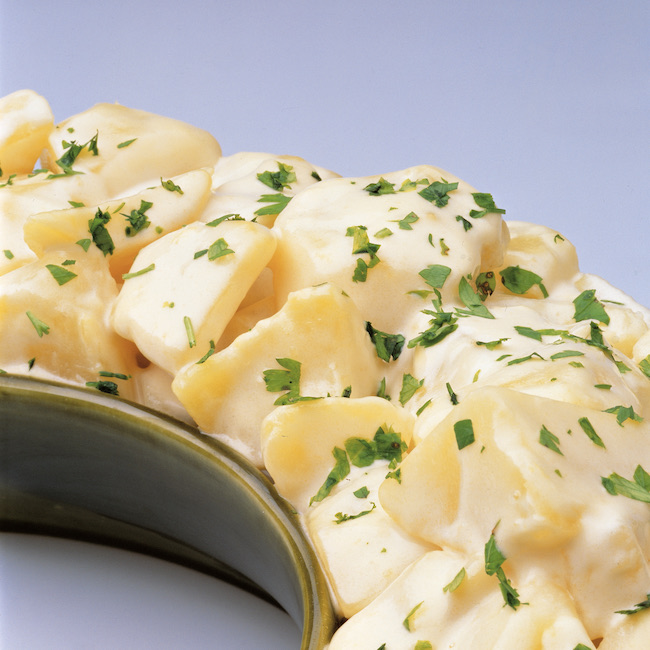
Brief History
As María José Sevilla says in her excellent book Delicioso A History of Food in Spain, “Spanish cocinas have their origins in the food of the feudal peasantry.” Spain’s sauces are simple and rely on humble ingredients, at their core, mainly vegetables and nuts.
Our sauces have echoes of the diverse cultures that have inhabited the country and by the ingredients brought home from the American continent, which in many cases we were the first to add to our diets (chocolate, tomatoes, peppers). Spain’s sauces are also very regional and echo Spain’s complex geography which gave rise to our autonomous communities, where different cultures and, in some cases, languages flourish. The basis of most Spanish sauces is olive oil, but this use has two different origins, one Roman (Catalonia) and one Moorish (Andalucia), thereby our aceite de oliva culture is doubly rich. The use of nuts and vinegar is of marked Moorish origin, and others like the mayonesa, that dresses our Russian salad, is a sauce whose provenance is contested by both France and Spain.
Not all the influential sauces that were part of our history have survived, as evidenced by the disappearance of the Roman sauce garum (a sauce of mostly fermented fish) and the sauces based on bitter oranges of the Moors that were common in Al-Andalus, the Muslim ruled parts of the Iberian peninsula from 711 to 1492 AD.
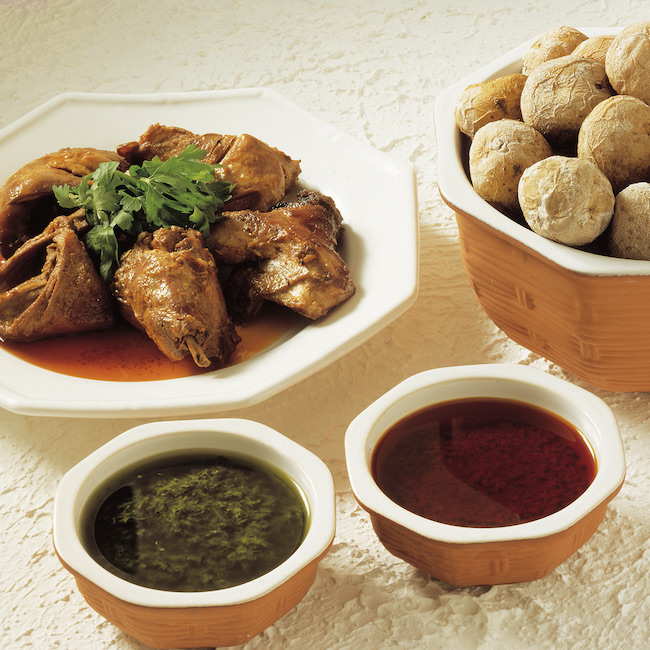
The Sauces
Our sauces are hard to classify, they can be divided into two main categories – cold and hot- but sometimes there are some that act also as thickeners as in the case of Catalán picadas or Castilian majados, which are in their most basic form garlic, bread and parsley.
These are Spain’s most emblematic sauces that are served cold:
Alioli, a cold emulsion of olive oil and garlic associated with the Spanish Levant and served with iconic dishes such as arroz a banda, saffron yellow rice served with fish on the side and arroz negro, black squid rice.
Mayonesa, the classic egg yolk and oil emulsion of our beloved Russian salad. A sauce whose origin is contested between Spain and France.
Romesco, a Catalan sauce made with roasted peppers, tomatoes, nuts, vinegar, bread and ñora peppers that is traditionally served with calçots and also with fish dishes.
Vinagretas, although not technically sauces, act as such and pay homage to the quality of our extra virgin olive oil and unique vinegars such as Jerez DOP, PX and Montilla-Moriles DOP and to which many enhancements are added such as nuts and vegetable purees.
Escabeche, a concoction of vinegar, olive oil, garlic and the cooking jus of the meat or fish which originated as a preservation method for fish and meat in Persia and was brought to Spain by the Moors. In modern times it has evolved into a sauce. It is the star of Galician tinned mussels which come packed in it and are served with plain potato crisps in bars all over Spain.
Picadas or Majados, preparations made originally in a pestle and mortar that include thickening agents like bread, nuts, herbs, garlic and even chocolate in Catalonia. They can be used as a sauce. They are added towards the end of cooking to thicken a sauce or stew.
And these are our most famous sauces that are served hot:
Salsa Brava, made traditionally with ham stock and flavoured with guindilla pepper, this arch famous sauce is served with potatoes in patatas bravas, an infallible tapa.
Salsa de tinta de calamar, or squid ink sauce, is made with a sofrito base and served with calamares and also other types of fish. Like escabeche it is popular in canning where squid tins come with this sauce.
Pil pil, an emulsion of cod fish collagen, garlic and oil. A traditional and original Basque sauce served with kokotxas, the v-shaped piece that sits between the chin and the neck of fish.
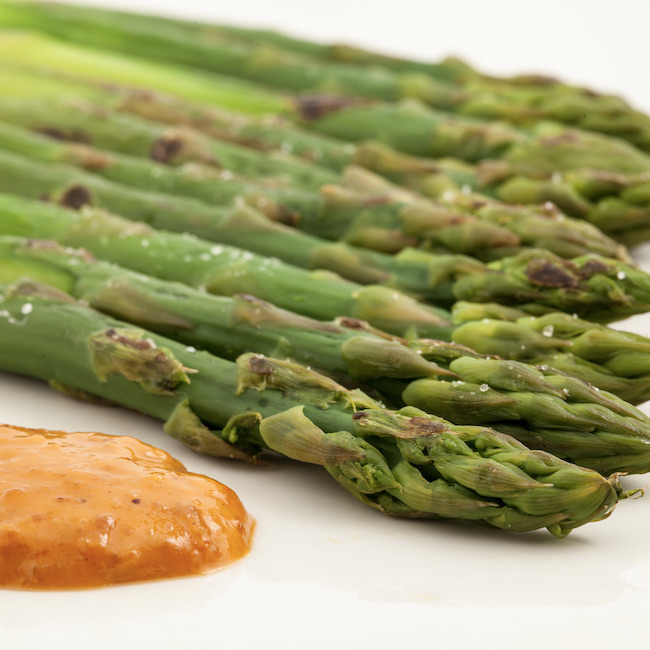
Vizcaína, a Basque sauce made with choricero peppers, onion, fish fumet and onion.
Salsa Verde, a Basque sauce made with parsley, garlic, olive oil and wine, traditionally served with hake and clams in the superlative dish Merluza con almejas en salsa verde in which the juice released by the clams enhances the sauce.
Salsa de almendra, an almond sauce especially popular with cardoons. Pepitoria is similar but enriched with egg and saffron and served with chicken. We can also include ajo blanco, the cold garlic and almond soup that is frequently used as a sauce especially with shellfish.
Tomate frito, the first sauce that Spanish children learn to appreciate and which is served with the elemental arroz a la cubana or Cuban style rice, which is served with fried egg and banana.
Al ajillo, a family of sauces that are heavily perfumed with fried garlic.
Salsa de pimientos del piquillo, a puree of piquillo peppers from Navarra which is served commonly with stuffed piquillo peppers.
Salsa de queso Cabrales PDO, a sauce made with butter, cheese and cream served with the region’s prized veal. This is one of Spain’s only traditional cheese sauces.
Salsa de Chocolate, an evolution of the chocolate drink that reigned supreme in the Spain of the 17th century and although not seen on a national scale there are two very famous recipes, one from Catalonia which is served with squid: calamars farcits amb salsa de xocolata and one from Navarra which is served with partridges.
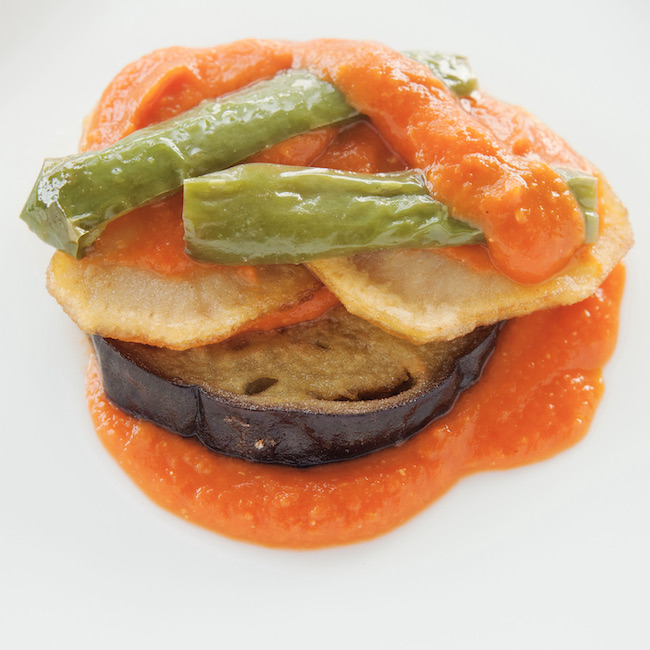
Chefs: Between Innovation and Tradition
Spanish chefs are always on the vanguard creating new sauces or modernising classic ones.
Pedro Sánchez of Michelin-starred Bagá in Jaen, a tiny restaurant in the city’s historic centre, have accomplished both. Bagá is a good place to review both the curriculum of Spanish sauces and the possibilities of the modern Spanish larder and huerta, including all the local varieties of extra virgin olive oil. His defining dish is a surf and turf dish that marries the typical partridge escabeche of the province with raw quisquillas de Huelva (translucent shrimp with blueish roe from the province of Huelva) to create a perfect dish that combines Peruvian ceviche, the game of the zone with the unmistakable flavours of an escabeche sauce.
Pedrito, as his colleagues and friends call him, is a master of sauces showcasing a dexterity that is hard to define because his pairings are elegant, simple yet unusual. His chocolate truffle with an Iberico pork fat cream is a borderline dessert that works because the bitterness of the chocolate contrasts with the unctuous, savoury, and meat-derived personality of the sauce.
Juanjo López Bedmar of Madrid’s unmissable La Tasquita de Enfrente believes in simplicity and superior products. For him, the four sauces that define Spain’s culinary genome are alioli, salsa brava, made the traditional way with ham broth and guindilla pepper, the classic salsa española, a sauce that although not as popular as in its heyday is representative with its wine reduction and dark roux, and squid ink sauce, a black sauce he makes with a fish caldo corto or court bouillon.
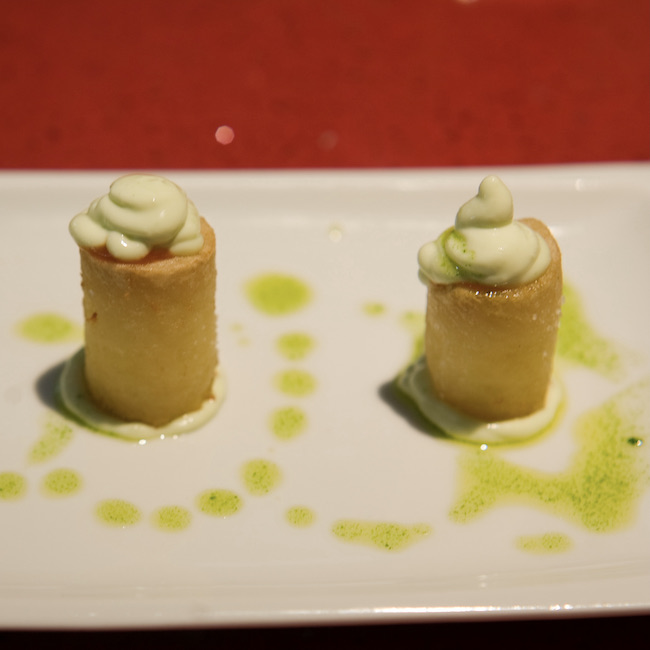
He makes all of this in his restaurant that he took over from his father after years working as a businessman and whom he memorialises when he makes salsa brava and serves it with a pig ear terrine. His cooking is intuitive, respectful and restrained, true hallmarks of a self-taught and clever man. No one is better positioned to showcase the elegance and restrained simplicity of Spanish sauce-making.
It is not only men that are augmenting the repertoire of sauces. There are many women too who have made their mark in this traditionally male profession.
Chef Mari Carmen Vélez is not only the “queen of aliolis” in the sense that she is the undisputed master of this sauce but no one in Spain has studied a sauce with such intense historical and chemical details but in a hands-on way, taking into account all elements of the sauce from the type of garlic, the season or the oil. It is not surprising that this sauce which was made traditionally with a lot of patience but a strong and steady hand in a pestle and mortar has found a master in this erudite woman. She places the origin of the sauce in the zone of her native Levante. Her deep knowledge of the sauce has brought her to present at premier chef conferences like Madrid Fusión and San Sebastian Gastronómica. Every day either at her restaurant La Sirena (Petrer, Alicante) or in her new venture Lo Nuestro in Lanzarote she surprises her guests with dishes that are paired with her innovative genre-defying aliolis that run the gamut of cacao flavoured to seaweed ones . She pairs her saffron alioli with arroz a banda and her smoked egg yolk ones with arroz negro, two other historically masculine dishes that she also masters. Other pairings are coffee flavoured alioli or nut based ones with chicken. She uses different techniques and ingredients every day, testing new emulsifiers, types of garlic and utensils.
Maria Jose San Román, from Restaurante Monastrell and president of Mujeres en Gastronomía, an organisation that promotes women in the food industry, still has a fondness for the sophistication of French sauces such as Bearnaise but she has made it Mediterranean by substituting the butter with extra virgin olive oil. Maria Jose is an advocate for Spanish vinegars like Vinagre de Jerez DOP and PX vinegar in sauces. Their myriad of health benefits and probiotics are sometimes overlooked in favour of foreign products like kombucha. To her Spanish sauces are also the simple aliños that are used to dress simply-cooked fish. She especially loves the simple aliño of garlic and guindilla with olive oil. She feels that the high quality and flavour of our olive oil is reflected in our use of aliños. At the core of her cooking is a sustainable Mediterranean diet, which draws on local ingredients. So simple, so good.